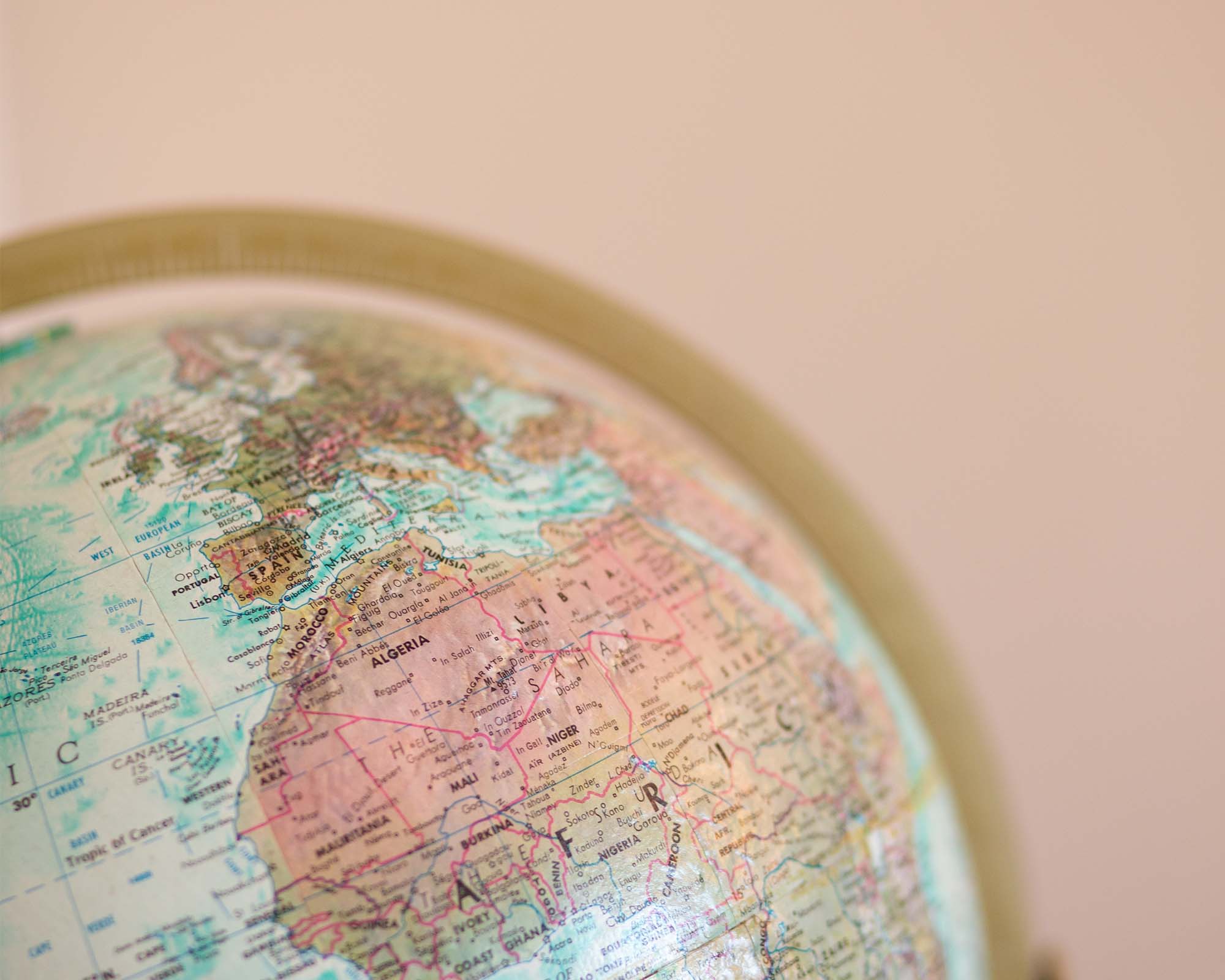We’ve all seen that little white label that sits tucked away on the inside of our clothing: “Made in Australia”, “Made in Turkey”, “Made in Bangladesh”. But what do those labels really mean? In this article, we discuss whether locally made clothing is more ethical. Read on to find out before your next shop.
A complex supply chain
When we see the “Made in…” label, most of the time we don’t even spare it a second thought. We take the label at face value, and if it says Australia, we believe the whole product to come from the land down under. But what we forget to acknowledge is the complex and interwoven supply chain that comprises much more than just the final stage of production.
Globalisation and consumerism have led to reduced transportation times and a heightened desire for the next trendy item of clothing ASAP. We see it, we want it, and we can get it — pretty much instantly. When we buy online, supply chains can become even harder to trace, and we have even less of an idea of where our clothes are actually made. Do the labels tell the truth? Or do they hide a complex supply chain rife with exploitation?
Some clothes have become so cheap that we don’t even think twice when throwing them away. It costs more to repair them, or to drive them to the local consignment store, than what we bought them for in the first place. Clothes can be more expensive when buying locally, but if you don’t, what’s the true cost?
Locally made for the environment?
When something is bought locally, it seems like it would be better for the environment, since we are more likely to be able to find out if the brand is harming, for example, our local water supply. But it is easy to forget that an item of clothing has many stages of production. From the origins of the raw materials, to the transformation of that raw material into the fabric we see as the basis of our clothes. It’s not as simple as sewing the fabric into a funky new pair of pants. There are many factors we need to consider.
The journey of a piece of clothing is complex and lengthy. It’s extremely rare for raw materials to be grown, processed, sewn, and sold all in one location. Each stage of the supply chain has some form of impact on the environment.
It gets even more complicated if you like vibrant and colourful clothing: all those sequins, sparkles, and dyes adorning your rainbow filled clothing rack have to come from somewhere – and they will inevitably end up back in the environment. Be prepared to ask retailers not just where their clothes are made, but where all those extras come from, and if they will biodegrade.
Certification schemes like the Global Organic Textile Standard can be a starting point for ensuring that items of clothing have not been dyed with anything toxic. This is not just for the environment’s sake, but also our own health. Buying locally can also make it easier for brands to produce “made to order” goods. This means they can simply stop production of items that aren’t selling very well, solving the common problem of deadstock (fabric leftover from production that is often thrown away).
Getting clothes from A to B is another huge contributor to pollution in the fashion industry. When global fashion brands make the move away from sea and air transportation, and instead shift clothing by short sea freight or rail, the reduction in carbon dioxide emissions is enormous. When we buy locally, this is definitely one of the biggest benefits.
It might be a shock to learn that most of the energy that goes into a t-shirt is the energy needed to care for it once it reaches your shelf. A third of its carbon footprint can be saved in its aftercare, so put away that iron, stop using the drier, and make sure you invest in a high-quality, long-lasting piece.
Locally made for the people?
Buying locally made clothes has the added bonus of increasing accountability. In many countries, producers and garment workers face exploitative conditions that result in human rights violations such as excessive hours, forced overtime, lack of job security, sexual harassment, and discrimination.
Unfortunately, many brands, particularly fast fashion brands, have been found to select suppliers from countries with lower degrees of human wellbeing. When apparel manufacturing takes place in countries with low labour costs and where the awareness of environmental and human rights are often less developed, this commonly leads to exploitation.
Although it seems like more developed countries could easily avoid such atrocities, locally made does not always mean better working conditions for the workers in the final stage of production. In Leicester, UK, it was estimated that 56% of garment industry workers “had been paid below the minimum wage, 55% did not receive holiday pay and a third had no contract and did not receive a payslip”. When we look at reports in the United States, the results aren’t much better. In 2021 it was revealed that thousands of workers in Southern California who make clothes for top fashion brands were earning “below minimum wage for 60-hour weeks in unsafe conditions“.
A note on women and women of colour in supply chains
Women are the literal driving force behind our clothes. A majority of garment workers around the world are women of colour. The garment industry jobs all these women hold can and should result in their economic empowerment. They deserve to have the financial independence to be able to decide whether to work, how much to work, and how to spend or save their income. Clothes made from afar have the potential to do great things by empowering these women. But we need to remain conscious of possible gender-based violence in supply chains as well, which could mean that women are facing discrimination and worse. Women also have different needs, such as childcare, since they are commonly the primary caregiver. These needs are sadly not often met in the fashion industry.
Locally made for the animals?
Lastly, we can’t forget about the non-human animals we share the planet with, and how they fare in this whole debate. Animal welfare in the fashion industry is a big problem in countries all around the world. Whether buying something from our own country or elsewhere, it is dependent on the local animal welfare legislation. World Animal Protection provides a useful index of many countries and the standards they uphold (or don’t) for our furred, feathered, and scaled friends, so we can see which “Made in…” labels we should really be avoiding.
Large amounts of leather sold throughout the world come from China and India. Both of these countries do not support the Universal Declaration on Animal Welfare, which means you should probably take a pass on their leather goods that aren’t backed up by any welfare certifications. Animal fibres such as fur also have an enormous impact on the environment. Fur has to be treated with toxic chemicals once removed from the animal, or it will rot. Not the most appealing fact, but it is a form of skin after all. It also takes at least four times more energy to produce a real fur coat than to produce a synthetic coat because of all the materials that go into raising the animals.
Buying clothing from brands that value animal ethics, as well as sustainability and health, is super important. And this will vary brand to brand, country to country. Whenever possible, try buying second-hand, which erases most of the impact in all three areas since you aren’t directly contributing to the garment’s production.
Is locally made better?
Choosing local can be a good choice, but what matters more, in the end, is how the brands you choose to support are managing their impacts across the supply chain.
Like anything, there are pros and cons to buying locally. Buying locally means more accountability and traceability. It can also help support local businesses. However, it’s important to remember that the fashion supply chain is extremely complex, and that no item can truly be 100% local.
This means that regardless of whether we buy a piece of clothing online or on our local high street, that item has likely already travelled around the world in some form, and had a considerable impact on the environment up to that point in its journey.
Being aware that a lot of brands are prone to greenwashing is very important too, as it is so easy in our tech-savvy era for brands to produce misleading information by putting “ethical” or a “sustainable” on their Instagram bio or website, with no solid evidence to back up their claims. Don’t be afraid to ask brands where their clothes are made.
Good On You is the ideal starting point for your research. Our ratings methodology is the fashion industry’s most robust and comprehensive, so if you ever come across a local brand and you’re not sure how it’s impacting people, the planet, and animals, use our app or web directory to check its rating and decide whether it’s worth supporting.
There is no perfect solution. However, avoiding fast fashion, buying fewer, quality, and second hand pieces is guaranteed to help shape a better future for all people, the planet, and animals.


















